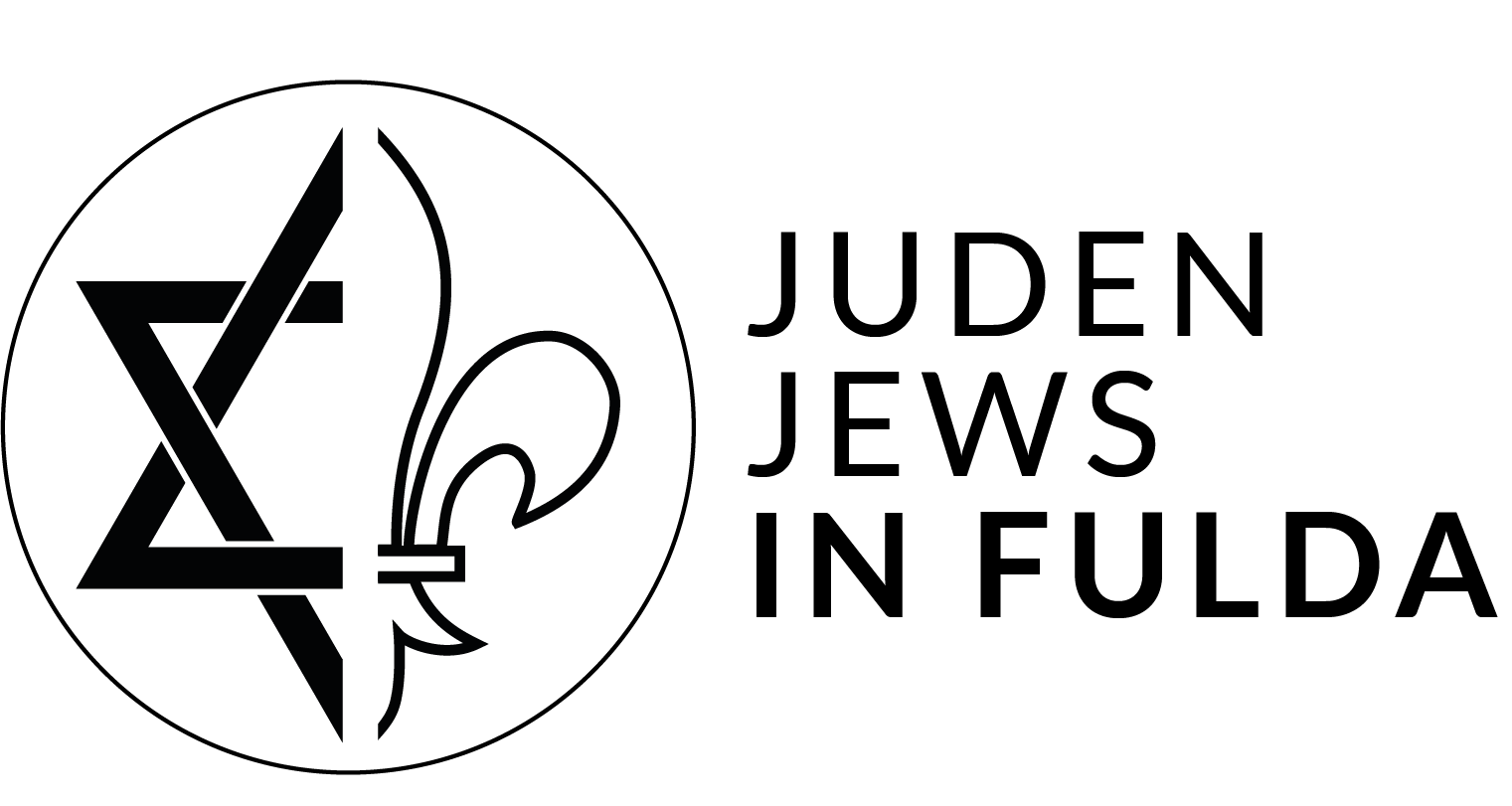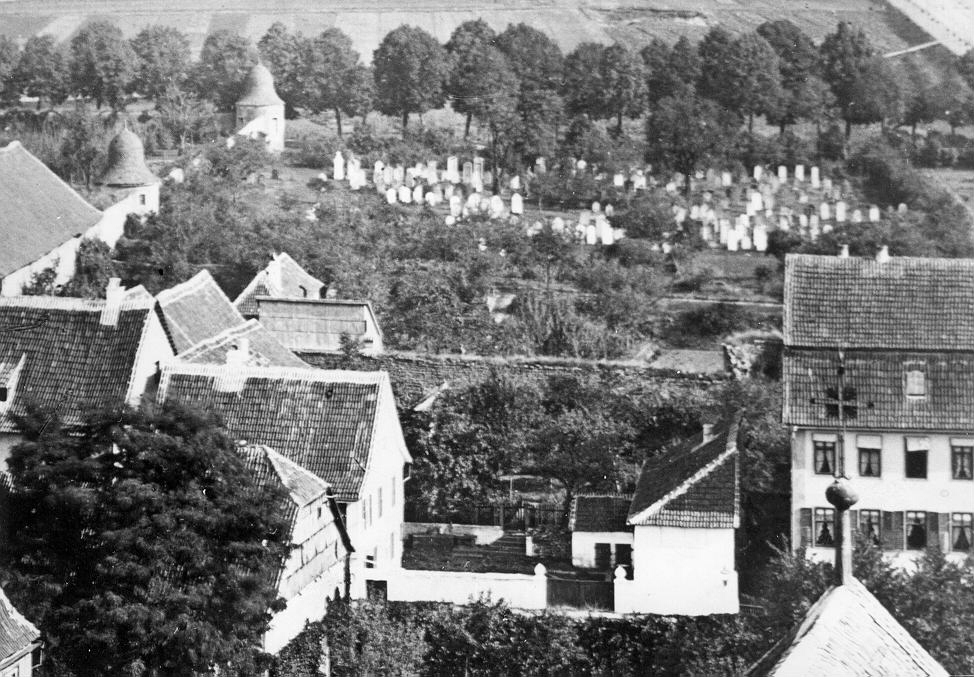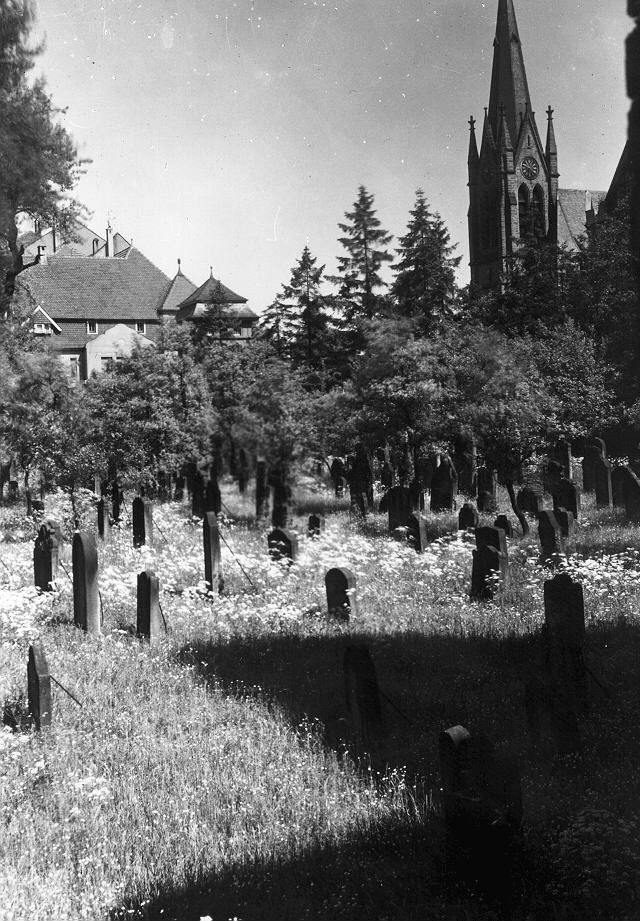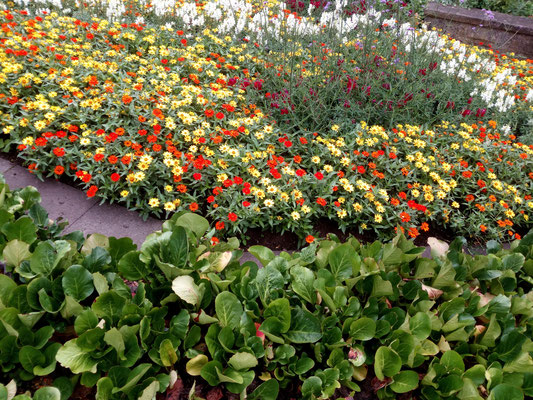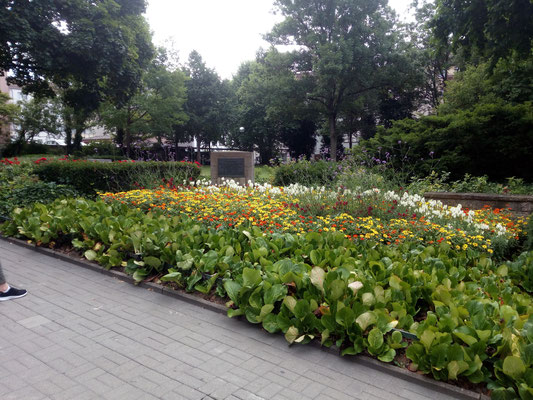History of the old Jewish Cemetery
Fulda’s Jewish cemetery is first mentioned in a document from 1442.
More than a hundred years later, a view of the residential city of Fulda by Hans Brosamer, in Sebastian Münster’s Cosmographia Universalis from 1550, permits us for the first time to identify the Jewish cemetery (see below) as part of the overall plan of the city. We can recognize its location across from the Spillings Tower outside the city wall and in close proximity to the medieval Centgerichtplatz. Its perimeter and a small house at its eastern end can also be identified.

In 1671, Fulda’s Abbot Bernhard Gustav, decreed that all Jews, except five families, were to be expelled from the royal-bishopric of Fulda. In the course of this expulsion, the Jewish cemetery was confiscated and the five remaining members of the Jewish community were assigned burial plots at the Peterstor behind the Ziegelhüttengarten (today Nikolausstrasse between Lindenstrasse and Heinrichstrasse).
Fulda’s Jewish community, in a petition dated September 24, 1685, reported that the burial place at Peterstor had become too small due to the renewed growth of the Jewish community. Their request to return to the original burial site was granted.
The area of the cemetery was expanded several times during the years 1823, 1825 and 1861 and Jewish community was granted permission to build a wall.
In 1906, what is now known as the “old Jewish cemetery,” was closed and the one on Edelzeller Strasse was established as a new burial ground for Fulda’s Jewish community.
The City of Fulda had been trying to convert the cemetery into a park since the 19th century, but representatives of the Jewish community rejected all purchase offers.
The two Jewish cemeteries were destroyed on Pogrom Night, also known as Kristallnacht and the Night of Broken Glass. On November 14, 1938, the property came into municipal possession, as a so called “donation” to Fulda by the Jewish community. The Fuldaer Zeitung reported that on January 17, 1939 “the stones […] were prepared at their location so that they could be possibly used for other purposes. Until the end of the war, this sacred spot for Jews, was used as farmland.
In 1949, the City of Fulda agreed to the return the Jewish cemetery to the IRSO (International Restitution Successor Organization).
In 1951, the City of Fulda again expressed its interest in the property. The following year it purchased the cemetery from the IRSO with the stipulation that the city would be permitted to erect buildings only along the back of the row of houses on Bahnhofstrasse, that a memorial stone would be erected and that the rest of the site would be turned into a green space.
The City of Fulda ignored the terms of the contract and sold the property to the federal government, which proceeded to build a four-story administration building at the corner of Lindenstrasse and Sturmiusstrasse for use as a main customs office. In turn, the IRSO filed a complaint alleging that the city had breached its contract. On September 30, 1954 the District Court of Fulda upheld the terms of contract and confirmed that nothing may be built on the property.
The reason why the customs building did not have to be demolished is largely thanks to Benjamin Ferencz (read here). A compromise was reached by which the city of Fulda was obligated to establish a prayer room for the Jewish community in the lower level of the customs building. This room was consecrated at a ceremony on November 8, 2018, attended by members of Fulda’s diaspora and representatives of Fulda’s Jewish community.
Today, if one looks at the old Jewish cemetery, the once larger plot of land has been infringed by numerous buildings, garages and street parking spaces. The remaining green area is used by dogs to defecate and is a meeting place for alcohol and drug consumption. There is no signage at the two pathways, that the area that one is entering is a Jewish cemetery; only the memorial stone with a small plaque at the corner of Sturmiusstrasse and Rabanusstrasse makes reference to it.
Today, there is a renewed effort on the part of the City of Fulda to recognize the old Jewish cemetery as a sacred place. We will post further details here as they become available.
January 2021
